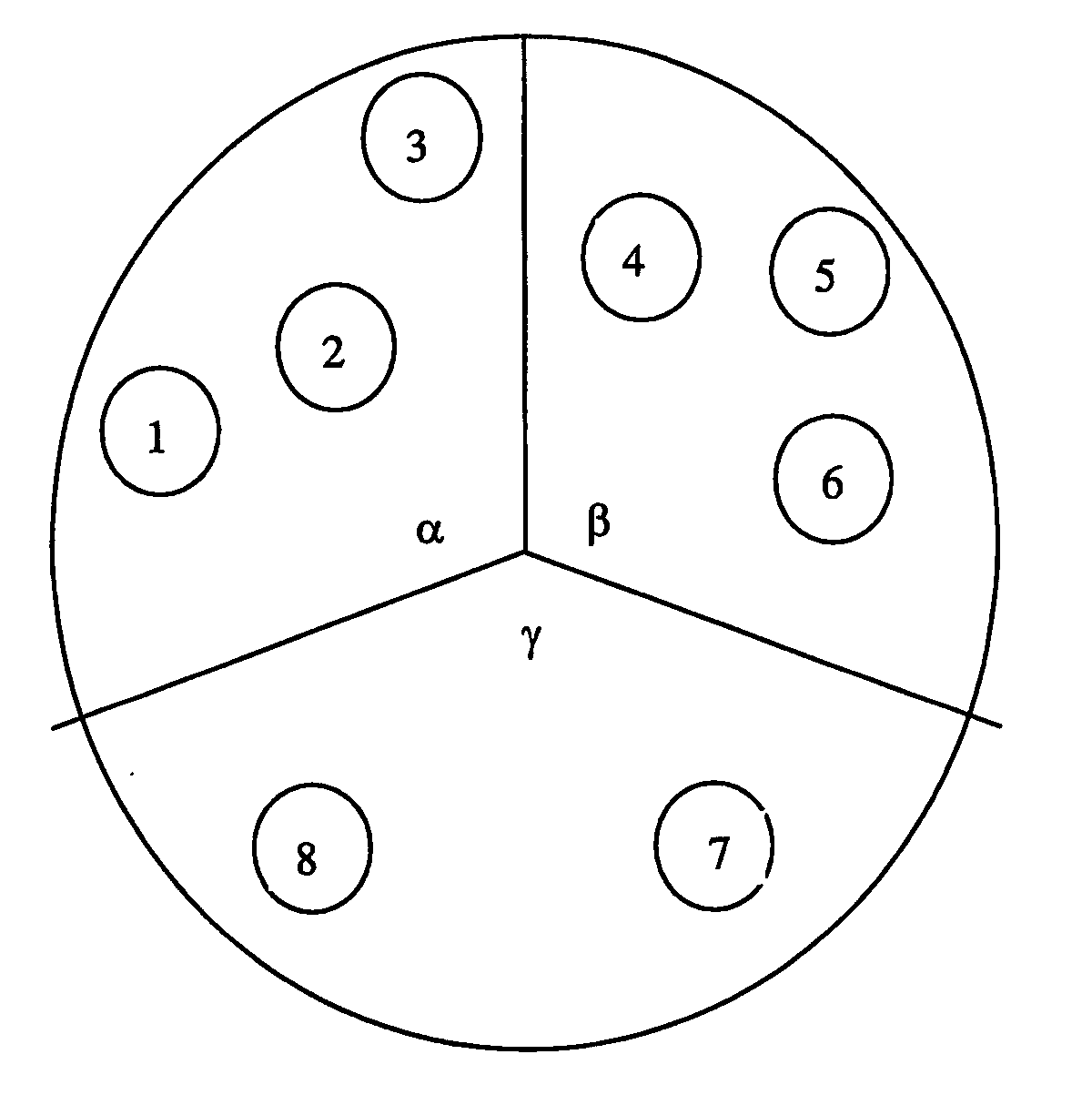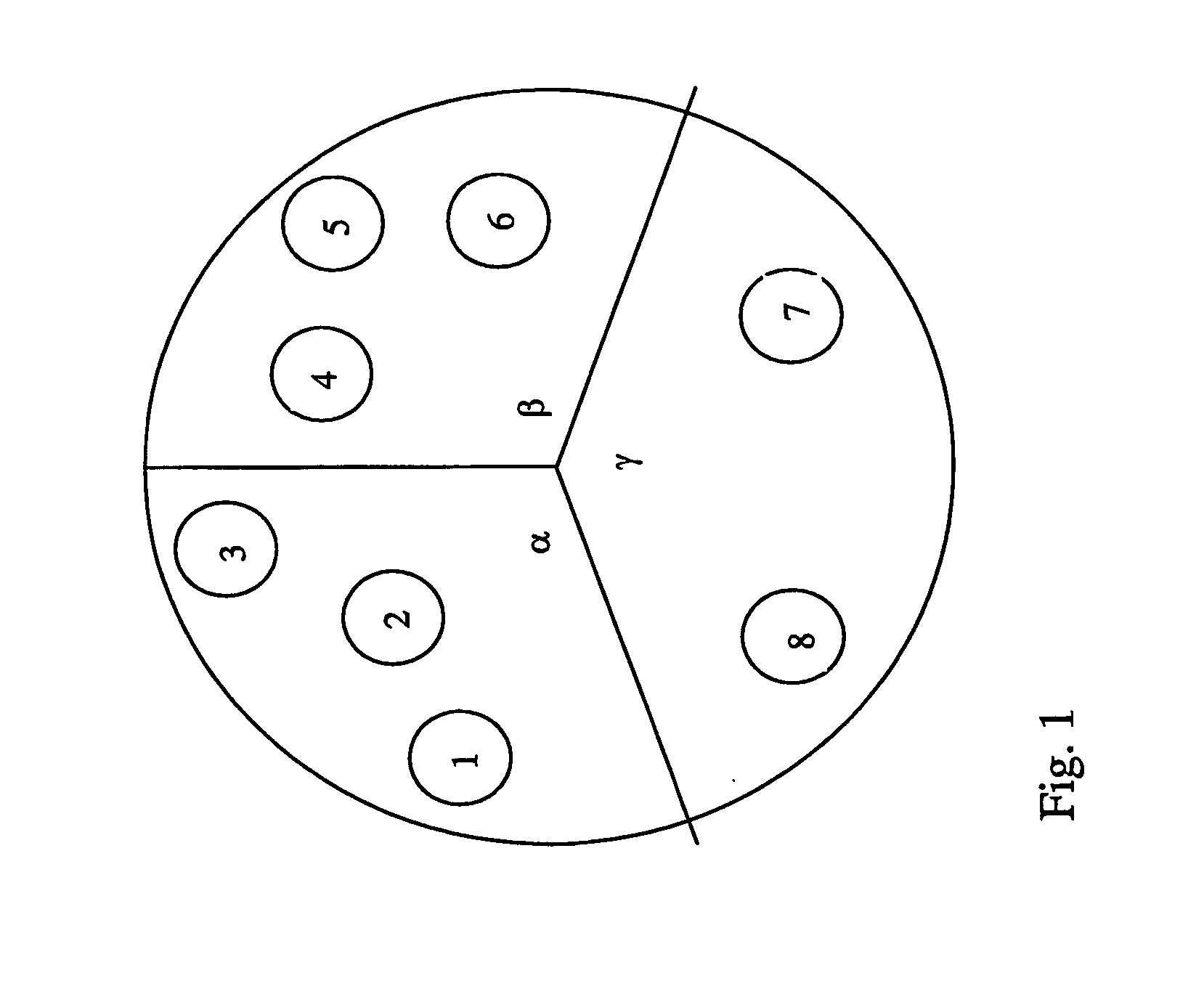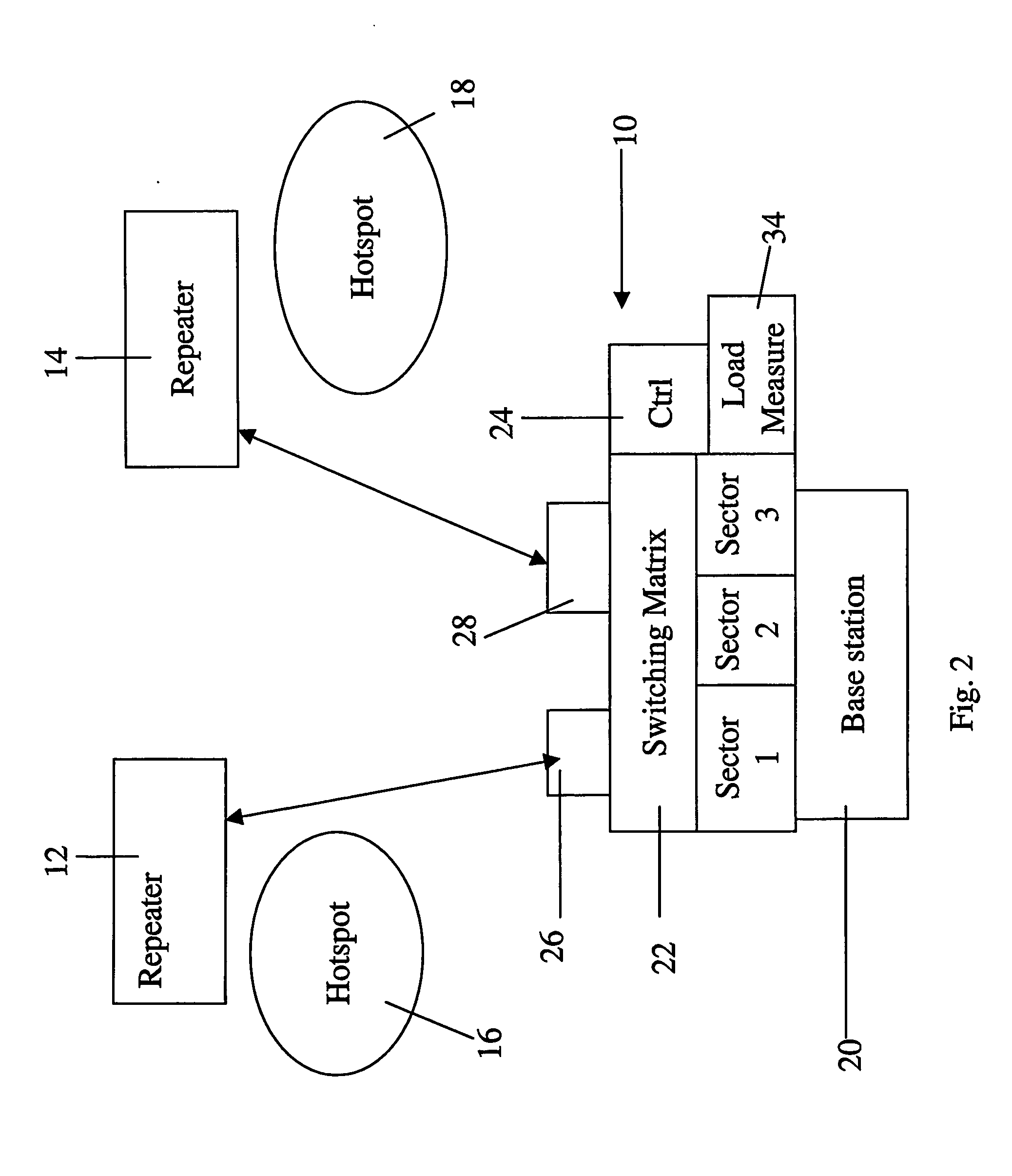Distributed cell balancing
a cell and cell technology, applied in the direction of electrical equipment, network planning, wireless commuication services, etc., can solve the problems of excessive load on the radio resources of the cell, poor service quality, limited capacity, etc., to prevent hot-spot type overload and efficient load balancing.
- Summary
- Abstract
- Description
- Claims
- Application Information
AI Technical Summary
Benefits of technology
Problems solved by technology
Method used
Image
Examples
Embodiment Construction
[0093] In the present embodiments we consider a sectored cell, where hot-spots in each sector are local, each served by its own repeater, and may draw high capacity at different times. Load sharing is applied between sectors by connecting repeaters which are located in one sector (the loaded sector) to other sectors which are less loaded. This is accomplished by connecting the repeater to the donor sector base station using frequency F2. The repeater converts the transmission back to F1, the original frequency of the donor base station. Softer handoff is applied between the repeaters and the sectors in which they are located.
[0094] Load balancing is performed and maintained by using a control subsystem, which measures the load in each sector, as well as the load served by each repeater, and an optimization algorithm, which dynamically assigns repeaters to sectored base stations, using a switching matrix.
[0095] The principles and operation of a load balancing system according to th...
PUM
 Login to View More
Login to View More Abstract
Description
Claims
Application Information
 Login to View More
Login to View More - R&D
- Intellectual Property
- Life Sciences
- Materials
- Tech Scout
- Unparalleled Data Quality
- Higher Quality Content
- 60% Fewer Hallucinations
Browse by: Latest US Patents, China's latest patents, Technical Efficacy Thesaurus, Application Domain, Technology Topic, Popular Technical Reports.
© 2025 PatSnap. All rights reserved.Legal|Privacy policy|Modern Slavery Act Transparency Statement|Sitemap|About US| Contact US: help@patsnap.com



